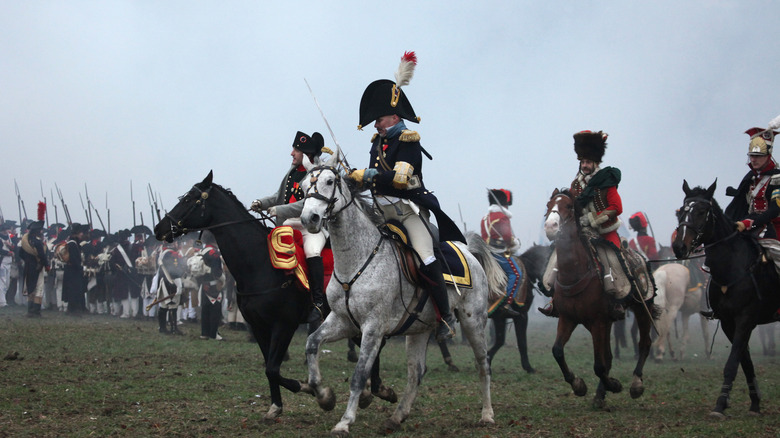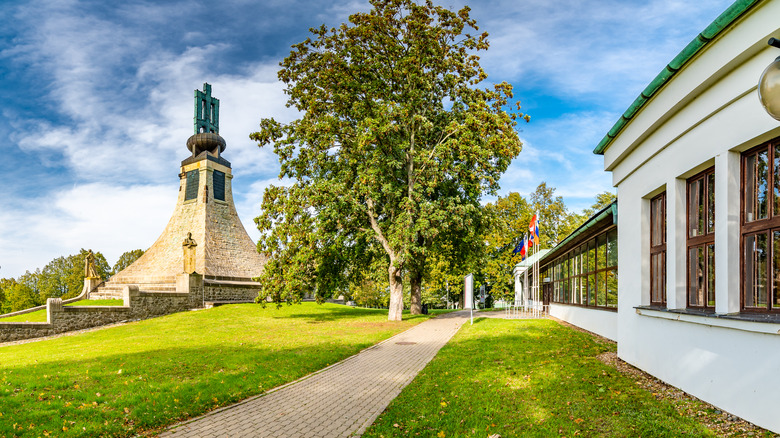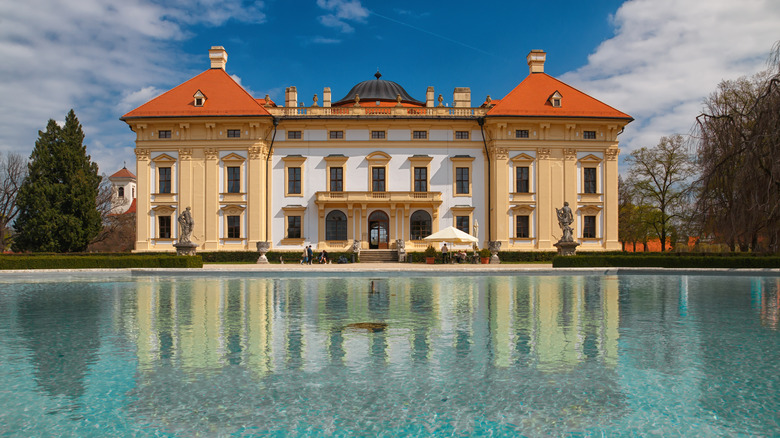Retrace Napoleon's Footsteps At This Famous Battlefield In The Czech Republic
You know you're on a battlefield because you can see the soldiers from miles around. As you drive from Brno to Slavkov u Brna (Austerlitz in German), the town that gave Napoleon's most famous victory its name, you are greeted with a peculiar sight. Across the field near Holubice stands three huge soldiers manning a giant cannon pointing west towards the country's second city. In typically quirky Czech fashion, the village's concrete factory has been converted to represent soldiers and field artillery from the conflict, one of many places in the area commemorating the Battle of the Three Emperors.
Brno was heavily fortified but fell with little resistance to the French army in November 1805. Napoleon had taken Vienna and marched north to confront the retreating forces of the combined Austrian and Russian empires, which had 90,000 men under their command. Napoleon's troops only numbered 68,000, but his tactical brilliance made all the difference when the armies decisively clashed on the 2nd of December. Using Brno as his base, the French Emperor scouted a perfect place for battle: The gently rolling landscape between the city and Austerlitz.
The highway now bisects the battlefield and, from the road, it's hard to imagine over 150,000 men locked in combat amid cannon fire and cavalry charges — especially as you drop in for a Big Mac at the Austerlitz service area. Yet if you explore the area in more detail, there are plenty of atmospheric sights that will take you back to 1805.
Touring the Austerlitz battlefield
If you're driving, it is very easy to explore the area under your own steam. To get the full experience, however, it might be best to hire the services of a local expert who will give you the full benefit of their knowledge and enthusiasm. On either side of the Austerlitz services are two key locations. On the south side is Žuráň Hill where Napoleon set up his headquarters as battle commenced on December 2, 1805. The vantage point gave the French emperor an excellent view across the battlefield as his commanders executed the bold strategy of luring in the enemy and encircling them. Now the spot is marked with a memorial bearing a map of the audacious battle plan.
On the other side of the highway is Santon Hill, chosen for its defensive advantages in guarding the French left flank. The area is now the venue for the annual re-enactment of the battle, which is the centerpiece of a larger program including bonfires, marches, and commemorative events. The 2023 edition involved around 1000 participants plus 60 horses and 15 cannons. Although it isn't quite on the scale of the real thing, it is still an exciting spectacle, and be warned — it gets loud! Admission is free unless you want to buy VIP tickets, which offer a better view of the action. Another option to explore the battlefields is to take part in an organized Austerlitz March which raises money for the Miltary Solidarity Fund.
Visiting the digs of all three Emperors
The Battle of Austerlitz only lasted a day and you can visit the spot where Napoleon's daring tactics proved decisive, storming the enemy on higher ground at Pracký kopec (Pratzen Heights). Now it is the site of a memorial dedicated to those who lost their lives during the conflict. It's a peaceful place for a stroll and there is also a small museum detailing the events of the battle.
Once you've seen the battlefield, a great way to finish your tour is a visit to Slavkov Castle, the fine 13th-century chateau that housed all three emperors at one point or another. Situated in the pleasant town of Slavkov u Brna, both Emperor Francis I and Tzar Alexander I resided in its lofty staterooms before the battle. Napoleon moved in during the aftermath and, in summarizing an epic battle that had touched many places in the area, named his famous victory after the German for the town, Austerlitz.
Nowadays you can take a tour through the magnificent building and relax in the chateau's lovely park; it is especially nice in the warm months when the fountain is working. When you're done soaking up all the history, there are a few decent options in town for a bite to eat, such as U Černého Lva (At the Black Lion). If you want to stick with the Napoleon theme, there is a restaurant serving solid Czech grub near the castle — named Restaurace Bonaparte, naturally.


